PROFILE
11 Jul 2023
PAUL JACKSON
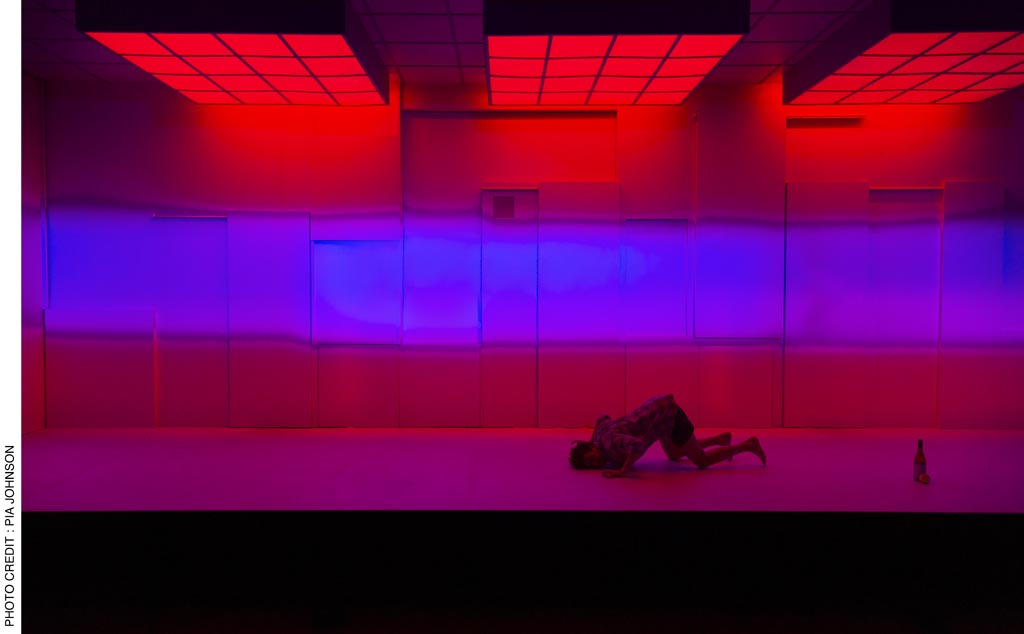
Subscribe to CX E-News
Like so many Melbourne theatre workers, Paul Jackson cut his teeth working at La Mama. “I wouldn’t have a career without La Mama, it’s where I learnt to do shows.” Paul started out as a production manager, but then one fateful day, somebody who’d seen one of these shows mistakenly thought he’d designed it and asked him to design a show for them. Paul has worked as a set designer, including as recently as last year on Monsters at the Malthouse, but is predominantly known in the industry for his lighting design and subsequent love of a boom. “A friend of mine once said: ‘What you want to do is only half of the equation, the other half is what the culture wants you to do.’ Everyone wanted me to be a lighting designer, so I stuck with that.”
Paul’s key years at La Mama were in the mid-to-late ’90s when his tools were entirely comprised of incandescent fixtures. “I remember unpacking the lights on the 30th Anniversary of La Mama in 1998. They were Selecon Acclaim Zoom Profiles; we were pretty excited about those.” Over his career, Paul has worked through massive developments in lighting technology. “I’ve seen moving lights become commonplace and takeover, and I’ve seen LEDs go from being an effect-driven device to a standard.”
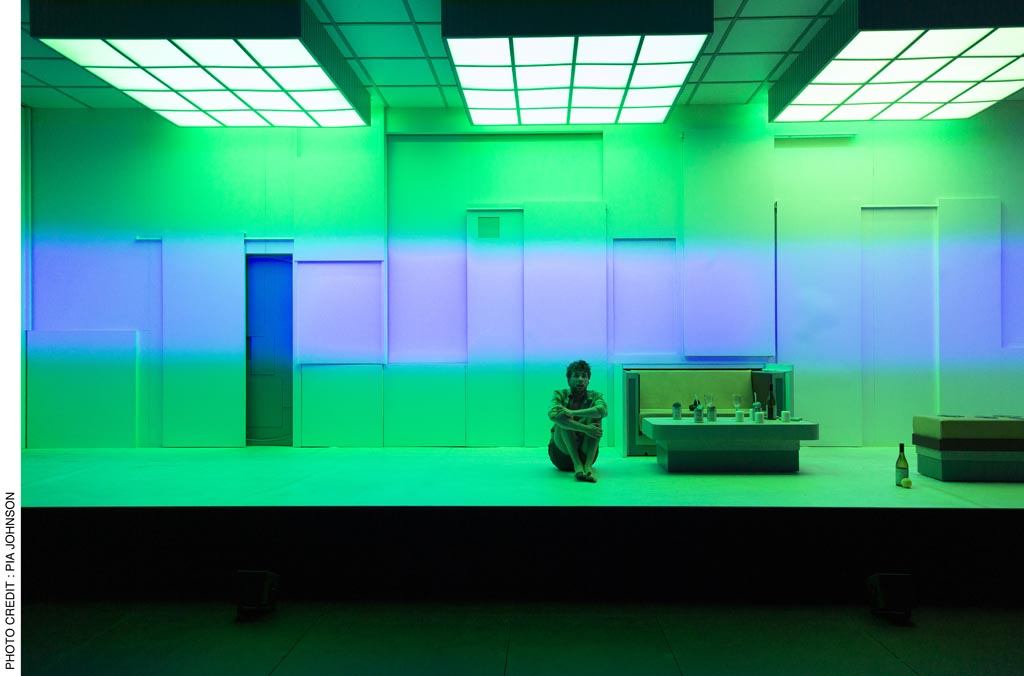
The first time Paul used moving lights, on a Joining the Chorus show in Mildura in 1998, the programmer operated the moving light rig and Paul operated the conventional fixtures on a separate desk. This practice of having both a ‘moving light’ programmer and a ‘conventional’ programmer was commonplace when the technology was first introduced. “The first time I used LED properly was during the 2008 Adelaide Festival. I was very excited back then by the fact that we could instantaneously turn the lighting stage red and then immediately back to white. We did a lot of primary colour mixing and primary colour shadow mixing.” Paul explains the design for Moving Target was about deconstructing white light. “It started as LED white and then fell away into RGB mix. That level of colour saturation and monofrequency colour was very exciting.” This initiated a period where Paul worked in block primary colour and thought a lot about colour as a way of dissolving space. “A lot of lighting design is about creating depth and shadow and texture. What primary, monofrequency colour can do is flatten everything out and reduce space to a single plane. Being able to move between those two things was very exciting.”
As technology has developed and improved so has its influence on Paul’s craft. “The Lustr and LED colour mixing profiles have fundamentally changed how I work.” Working with four or five colour chip instruments, Paul can work with colour saturation, but in a way that is shaped and controlled. Paul’s lighting design on Solaris (Malthouse 2019, touring to Edinburgh and London) included a red wash with a blue strip through it, an effect he says is only possible with LED instruments that can shutter and generate vibrant, primary colours. The Lustr has also created the ability to move between cool and warm light without having to shift shadows, and without needing to rig twice the number of lamps. And it has freed him from the need to worry about the incandescent curve when a lamp is on low. “Not having to calculate the warmth and being able to get low-level cold light that’s controllable, has been a great improvement.”
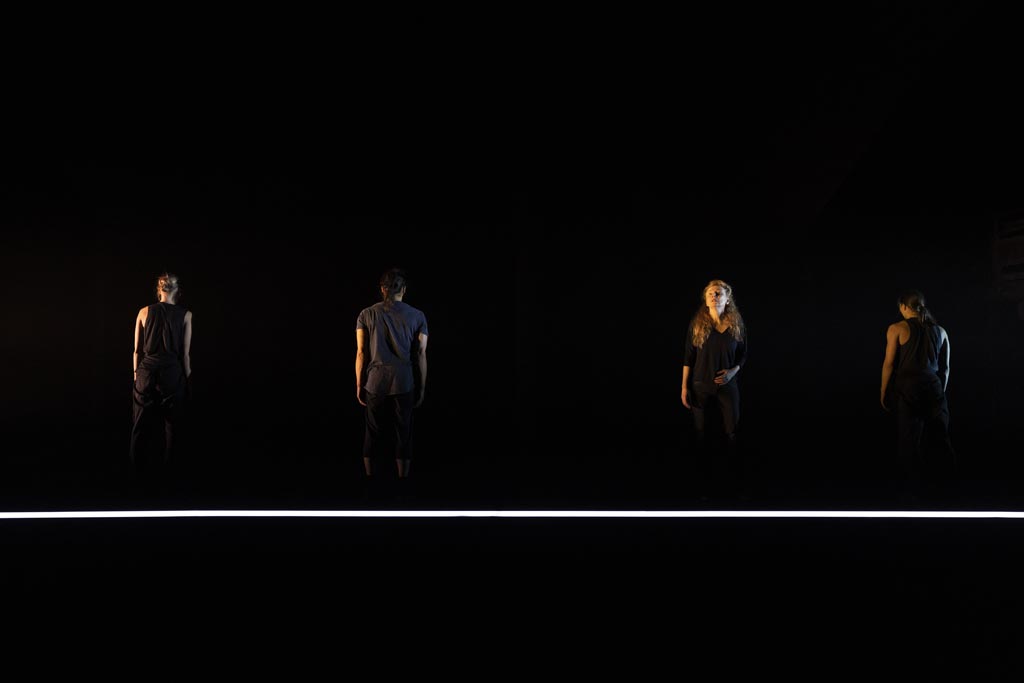
While technology has clearly inspired his designs, Paul maintains it hasn’t led to the death of the incandescent, just a repositioning of it. The most common place where you’ll find incandescent fixtures in one of Paul’s designs is in front-of-house lighting positions for face light. “If I want to pop a face out of an environment, I want incandescents to do that. They have the skin response that LEDs can’t manage. LEDs can generate contrast very well, which is really great, but if you want that skin response you have to work with incandescents.”
Likewise, he describes the dimmer curve of a filament as radically different to anything else. “I love that, particularly as back light.” And Paul is yet to find a lamp that can beat the classic 2K Fresnel for a large, single-colour wash. He wouldn’t bother using incandescents to attempt saturated colour anymore, but appreciates the tinting and gel work you can do that LED still struggles with. “One of my favourite designs is one I did at La Mama with eight lamps. I can’t tell you what they were, I just used what was there. It was a very pure experience of light and space.”
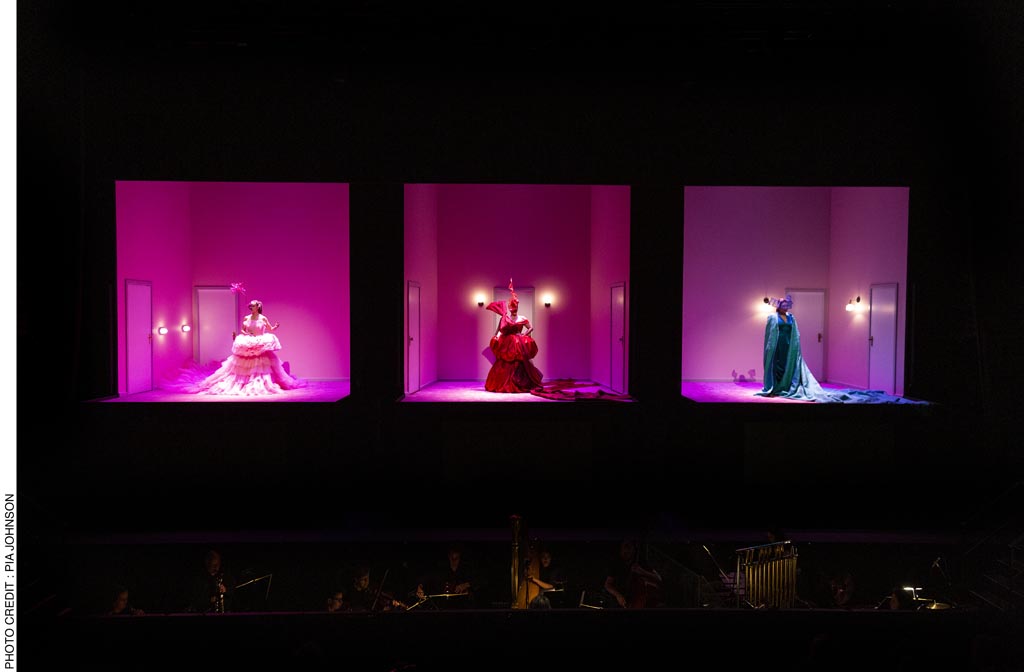
In terms of future technology, Paul looks forward to seeing LED cyc units develop, and he would love a Lustr’s engine within a moving head. “I suspect there are issues with output there.” He would also like a colour mixing Fresnel that has the output of a 2K. “You can use 50-degree Lustrs, but I still love the old 223 Fresnel with its big dinner plate lens and the beautiful softness of light. Something that would give me that quality that could also colour mix would be great.”
New technology is one of the factors that has determined trends in lighting design over the years. “Often you will see a new wave of technology be exploited and exhausted before it gets incorporated as just another tool in the bag.” Yet Paul sees trends in lighting design as more driven by the industry’s relationship to lighting and other technical aspects of theatre. “There have been periods where people were really interested in light and fascinated by it, often that will correlate with when there are strong practitioners around. But it shifts along with how people are feeling about the more theatrical side of making shows. We go through stages where people are excited about theatricality and phases where they are deeply suspicious of it, and lighting gets lumped in with that.” Included in these trends is how shows are staged. “When I started in this caper, making shows in theatres was seen as very old-hat and very conservative, so we made shows in car parks and warehouses. And then people became really interested in making shows in theatres again and went back to proscenium arch spaces. Now we’re circling back again.” Trends like this make a difference to how people think about light and space.
A sophisticated understanding of the gear is not the only skill of a lighting designer. Paul describes the role of light in a production as fundamentally dramaturgical. “On a basic level, light is telling people what’s important and where to look. On another level it’s creating a mood or a tone. But it’s also shaping how those performers and characters exist in an environment and a space. Constantly transforming that and shaping that is what I find interesting.”
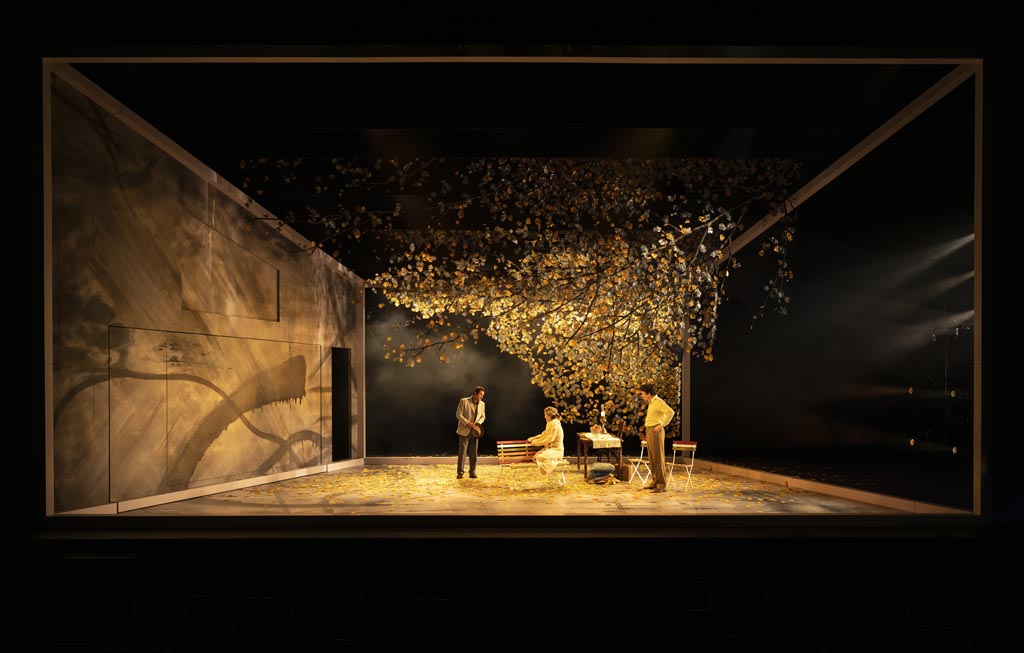
Making a show is a collaboration between all departments, but Paul’s key collaborators over his career have been with directors, many of whom he has ongoing working relationships with. “I am always interested in the director’s take on a script. Language and conversation are how I approach things. Discussing things with a director is what drives me and what I find most interesting.”
Paul has mentored students both through the Besen Program at the Malthouse and the Women in Theatre program at the MTC. What he hopes to impart on students is that there is no right or wrong way to do the job. “There’s a danger in thinking there’s a better or worse way of doing it; there’s not. There’s only your way.” Notably, Paul describes the first design he ever attempted as a failure. “I think I was just trying to do what the book was telling me to do. The whole point of being an artist is finding the thing that you have to contribute that nobody else can and exploring that as fully and deeply as possible.” Paul encourages his students not to learn how to design like him, but to understand how they would do it differently, and interrogate that. “In many ways students should find observing me a little frustrating, because they want to do it another way.”
As for his own bugbears, Paul dislikes when the lighting design does either too much or not enough. “I find a lot of contemporary lighting design overstimulated: too many cues, accentuating every beat. It has its place and people enjoy it, but it’s not for me and it’s not what I do.” A fan of darkness and shadow, he also doesn’t like designs that are too bright.
“I spend a lot of time turning lights off. I get brightness burnout!” Ultimately, Paul wants theatre makers to appreciate the dramaturgical role of lighting. “Shows that don’t have an ambition for the lighting and don’t have a sense of its contribution, apart from seeing the action on stage, I find a wasted opportunity. But I would think that; I’m a lighting designer.”
Paul Jackson’s lighting design can be seen on upcoming productions at the Malthouse: This is Living, MTC: Escaped Alone and What If Only, Black Swan Theatre: Dirty Birds, and the Queensland Ballet.
Photos Credit: Pia Johnson
Subscribe
Published monthly since 1991, our famous AV industry magazine is free for download or pay for print. Subscribers also receive CX News, our free weekly email with the latest industry news and jobs.




